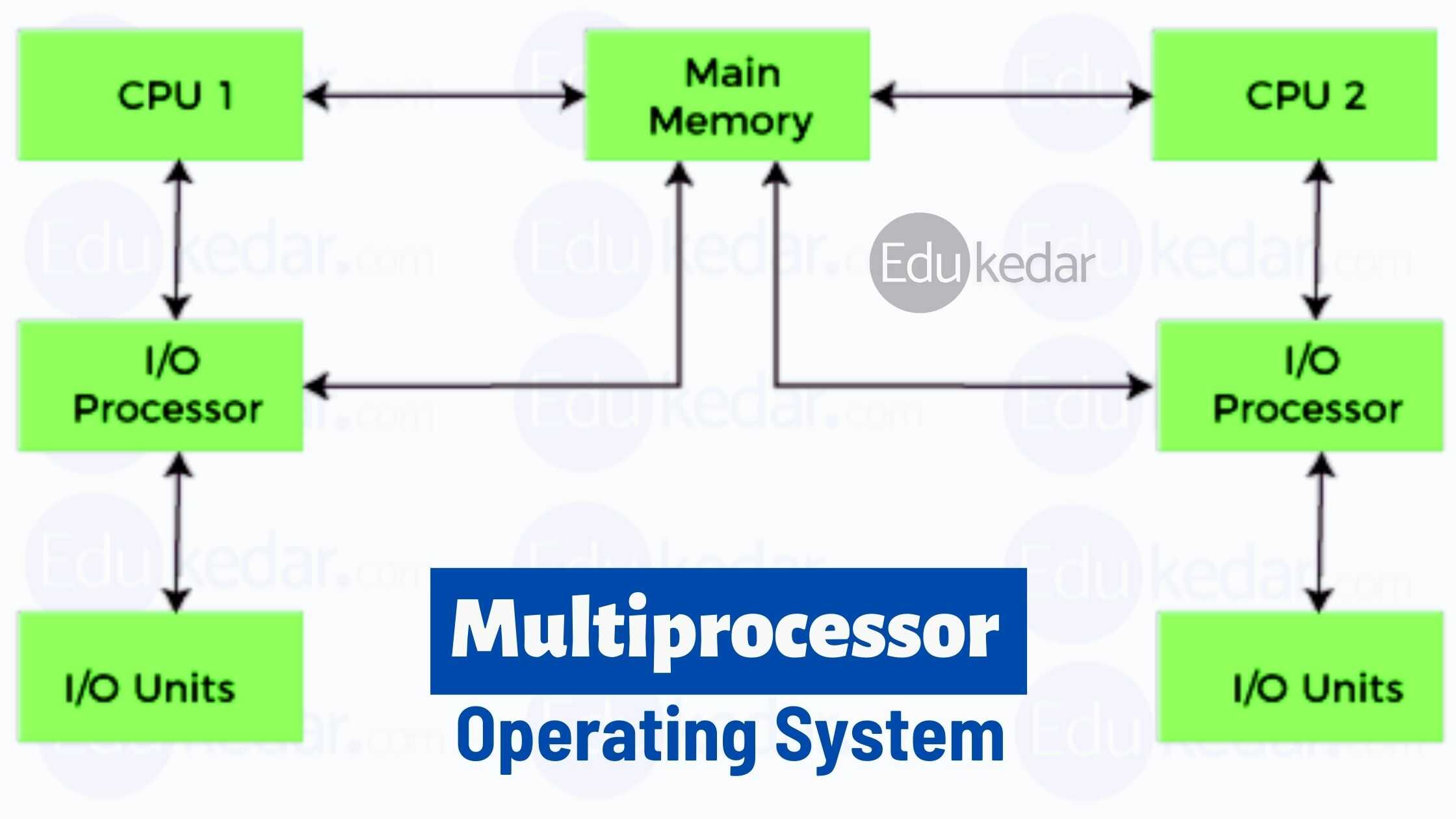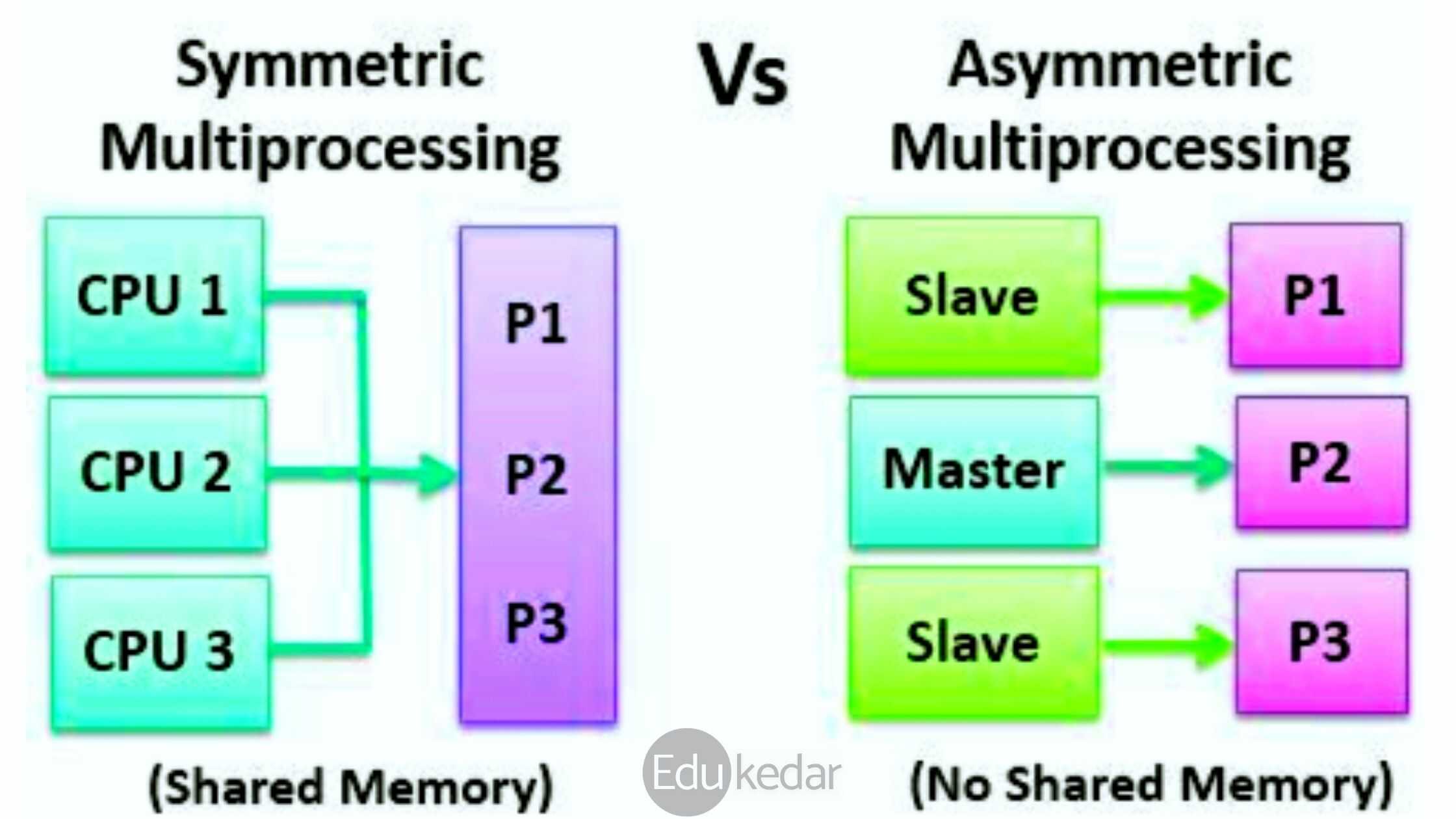A Multiprocessor system is simply a collection of more than one CPU in a single computer system. Here in this article, we have shared a basic introduction to Multiprocessors. Topics such as Meaning, definition, and Types of Multiprocessors, Advantages, and limitations of Multiprocessors are discussed here.
So let’s start our discussion with an introduction to Multiprocessors.
► What is Multiprocessors?

- A Multiprocessor system is a collection of a number of standard processors put together in an innovative way to improve the performance and speed of computer hardware.
- The main feature, objective, and purpose of the Multiprocessors are to provide high speed at a low cost in comparison to a uniprocessor.
Short Definition of Multiprocessor
A Multiprocessor system is an interconnection of two or more CPU’s with memory and input-output equipment.
In other words, Multiprocessing is the use of two or more central processing units (CPUs) within a single computer system.
- Multiprocessing also refers to the ability of a system to support more than one processor and or the ability to allocate tasks between them.
- The term processor in multiprocessor can mean either a CPU or an input-output processor (IOP).
Importance of Multiprocessor:
- The majority of computer systems are single-processor systems, meaning they have only one processor.
- Multiprocessor or parallel systems, on the other hand, are becoming increasingly important in today’s world.
- Multiple processors work in parallel in these systems, sharing the computer clock, memory, bus, peripheral devices, and so on.
An illustration of the multiprocessor architecture can be seen here with understanding Systems with Multiple Processors.
► Multiprocessor System

A multiprocessor, according to some online dictionaries, is a computer system with two or more processing units (many processors) that share main memory and peripherals to process programs simultaneously.
A 2009 textbook characterized multiprocessor systems similarly, but added that the processors may share “part or all of the system’s memory and I/O facilities,” as well as using the term “tightly connected system.”
Multiprocessing is a term used in operating systems to describe the execution of numerous concurrent processes in a system, each of which runs on a different CPU or core, rather than a single process at any given moment. When used with this concept, multiprocessing is sometimes contrasted with multitasking, which may use only one processor but switches it between jobs in time slices (i.e. A time-sharing system).
Multiprocessing, on the other hand, refers to the simultaneous execution of several processes across several processors. Multiprocessing does not always imply that a single process or task is running on multiple processors at the same time; the term parallel processing is commonly used to describe this circumstance.
Other authors prefer the word multiprogramming for operating system approaches and use the term multiprocessing for the hardware element of having many processors.
The remainder of this article focuses solely on multiprocessing in terms of hardware.
Multiprocessors, as defined above, are MIMD machines in Flynn’s taxonomy.
Multiprocessors are not the whole class of MIMD machines, which also includes message-passing multicomputer systems, because the word “multiprocessor” usually refers to tightly connected systems in which all processors share memory.
Multiprocessor Operating System
- Multiprocessor Operating System simply means when there are two or more central processing units (CPUs) present in a single computer system.
- These multiple CPUs are in communication with each other and share the same computer bus, memory, and other peripheral devices.
- These systems are referred to as tightly coupled systems.
- They are two different types applied for various environments.
Must Read ➜ What is Multiplexing?
► Types of Multiprocessor
There are mainly two types of multiprocessor systems.
- Symmetric multiprocessing (SMP)
- Asymmetric multiprocessing (ASMP)
Symmetric Vs Asymmetric Multiprocessing

- Symmetric multiprocessing systems are those that treat all CPUs equally.
- Asymmetric multiprocessing is a non-uniform memory access (NUMA) multiprocessing, and clustered multiprocessing are all options for dividing system resources in systems where all CPUs are not equal.
Multiprocessors come in a variety of shapes and sizes.
Asymmetric and symmetric multiprocessors are the two basic types of multiprocessors. The following are the specifications:
Symmetric Multiprocessor System (SMP):
Each processor in these systems has a similar copy of the operating system, and they all communicate with one another.
This is known as the Multiprocessors system with Symmetry.
All of the processors are in a peer-to-peer arrangement, which means that there is no master-slave relationship between them.
Asymmetric Multiprocessors System (ASMP):
Each CPU in an asymmetric system is assigned a certain duty. A master processor is in charge of giving instructions to all of the other processors.
A master-slave relationship exists in an asymmetric multiprocessor system.
Prior to the invention of symmetric multiprocessors, asymmetric multiprocessors were the only form of multiprocessor accessible. This is also the less expensive option now.
Must Read ➜ What is Data Communication?
► Advantages of Multiprocessors:
Multiprocessor systems have a number of advantages and benefits. Some of them are as follows:
System Reliability
Even if one processor fails in a multiprocessor system, the system will not come to a standstill. Graceful degradation refers to the capacity to continue working despite hardware breakdown.
For example, if a multiprocessor system has five processors and one of them breaks, the remaining four processors continue to function. As a result, the machine only slows down rather than coming to a complete stop.
Increasing Throughput
When several processors operate together, the system’s throughput improves, or the number of processes that can be completed in a given amount of time. When there are N processors, the throughput improves by a factor of about N.
Additional Economic Systems
Multiprocessor systems are less expensive in the long term than single-processor systems because they share data storage, peripheral devices, power supplies, and other resources. If several processes share data, scheduling them on multiprocessor systems with shared data is preferable to scheduling them on separate computer systems with multiple copies of the data.
Must Read ➜ Types of Memory in Computer
► Limitations of Multiprocessors
Multiprocessor systems are not without their drawbacks. Here are a few examples of the limitations and disadvantages of multiprocessors:
- Increased Costs
- Despite the fact that multiprocessor systems are less expensive in the long term than numerous computer systems, they are still extremely costly. A single processor system is substantially less expensive to purchase than a multiprocessor system.
- It is necessary to use a complicated operating system.
- A multiprocessor system has numerous processors that share peripherals, memory, and other resources.
- As a result, scheduling processes and allocating resources to processes is substantially more difficult in multiprocessor systems than in single-processor systems.
- As a result, multiprocessor systems necessitate a more complex and complicated operating system.
- A lot of main memory is required.
- The memory in a multiprocessor system is shared by all of the processors. As a result, compared to single-processor systems, a substantially bigger pool of memory is required.
► Applications of Multiprocessor:
- As a single-instruction, single-data-stream uniprocessor (SISD).
- Single instruction, multiple data stream (SIMD) multiprocessors are commonly employed for vector processing.
- Multiple sequences of instructions in a single view, such as multiple instructions, single data stream (MISD), is a term used to describe hyper-threading or pipelined processors.
- Numerous, individual series of instructions in multiple viewpoints, such as multiple instructions, multiple data streams, are executed within a single system (MIMD).
Multiprocessor Vs Multicomputer
There are similarities between multiprocessor and multicomputer systems since both support concurrent operations, However, there exists an important distinction between the two.
In the case of multicomputer systems, several autonomous computers are connected through a network that may or may not communicate with each other.
On the other hand, in a multiprocessor system, processors interact with each other through an operating system and cooperate in the solution of a problem.
Differences between a multiprocessor and a multicomputer:
- A multiprocessor is a computer that has two or more central processing units (CPUs) that can execute numerous tasks, whereas a multicomputer is a computer that has several processors connected via an interconnection network to conduct a calculation task.
- A multiprocessor system is a single computer with many CPUs, whereas a multicomputer system is a collection of computers that work together as one.
- A multicomputer is simpler and less expensive to build than a multiprocessor.
- Programs in multiprocessors are typically easier, whereas programs in multicomputer systems are typically more challenging.
- Parallel computing is supported by multiprocessors, whereas distributed computing is supported by multi-computers.





